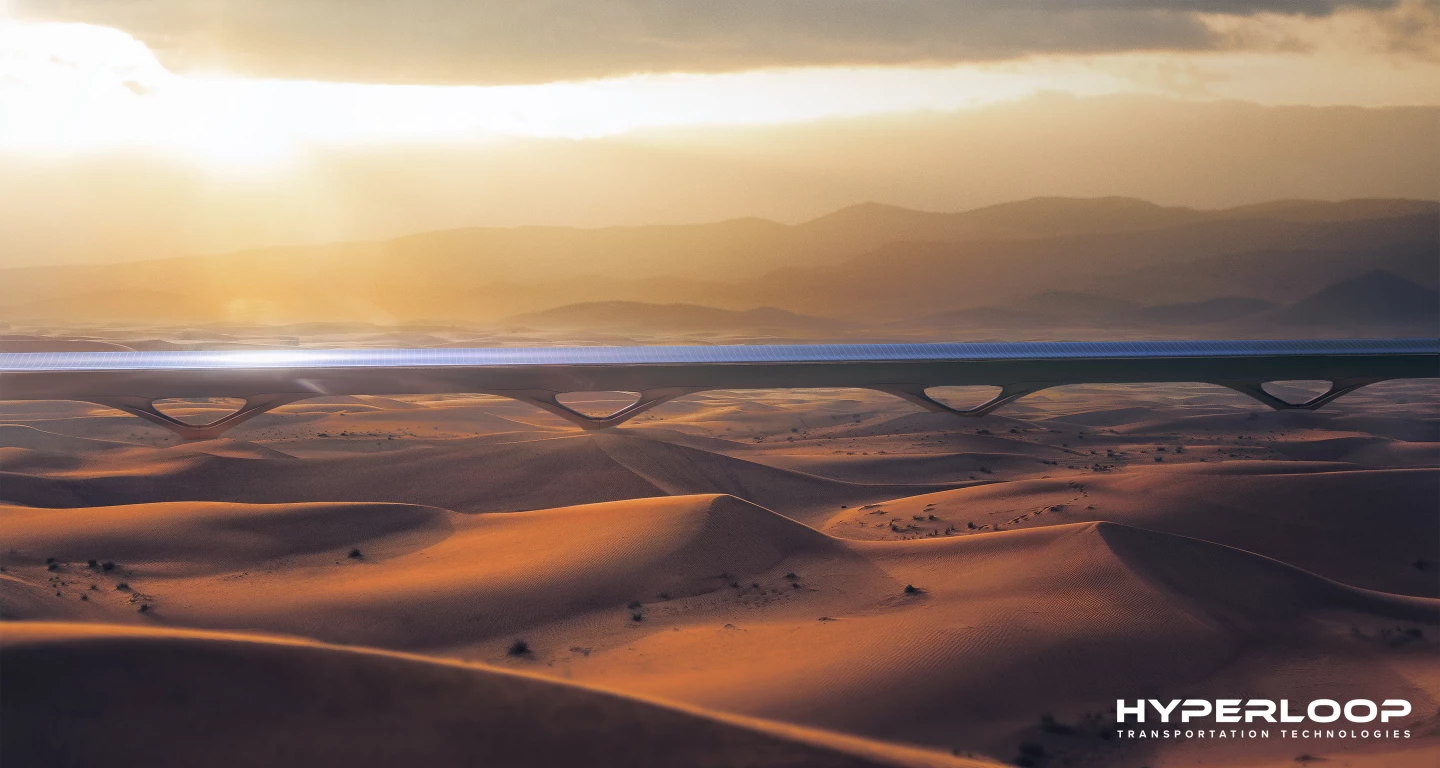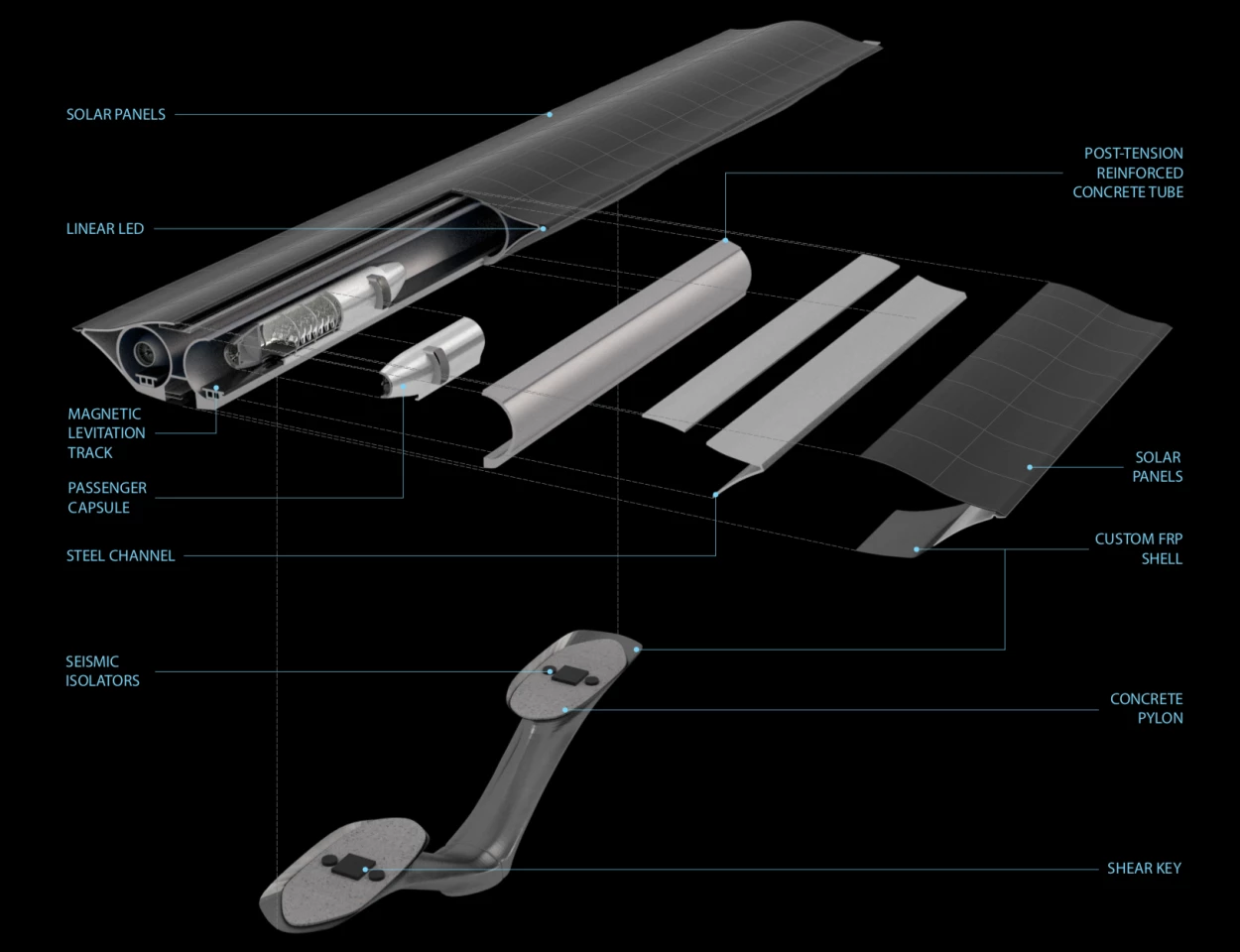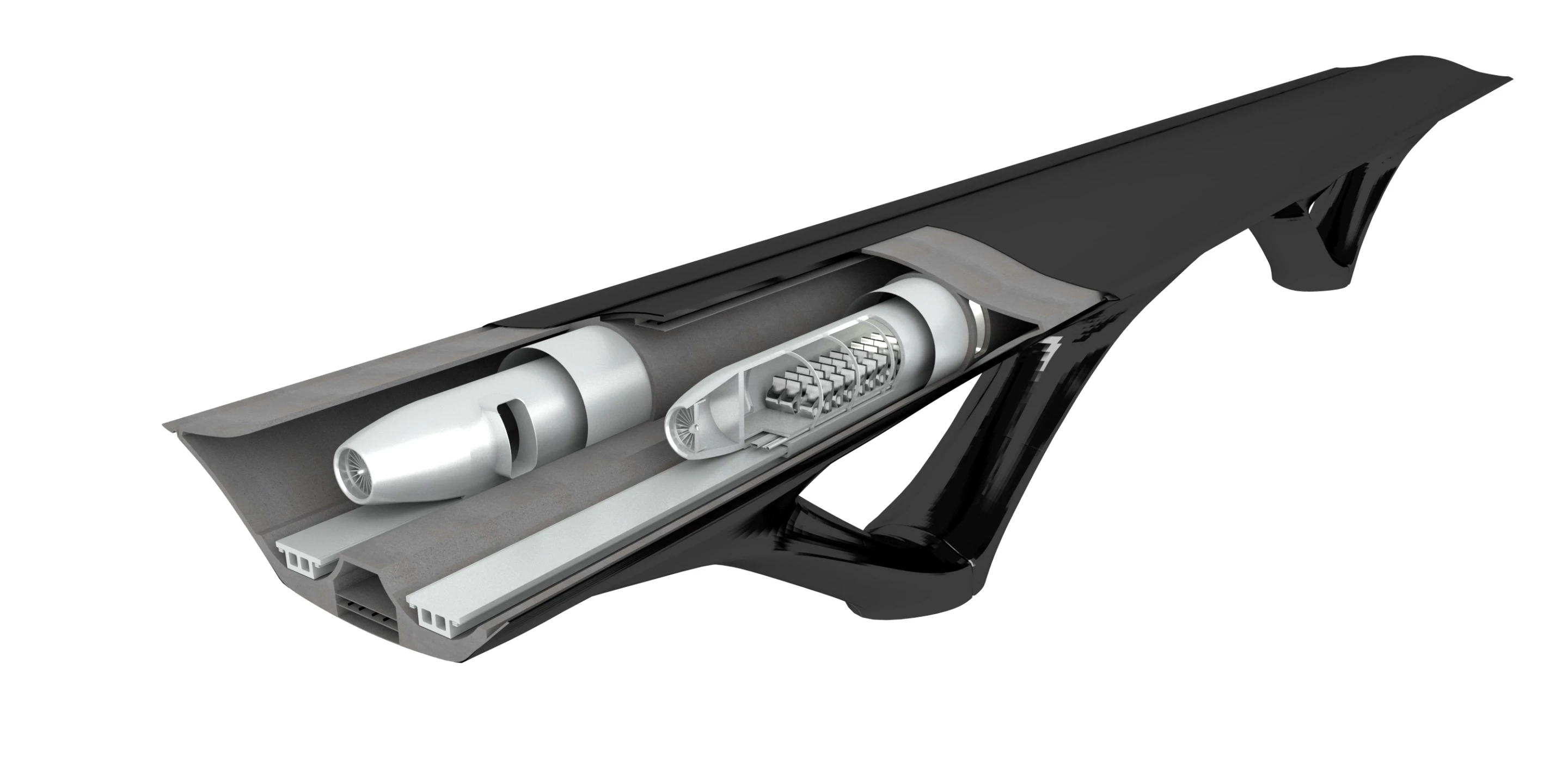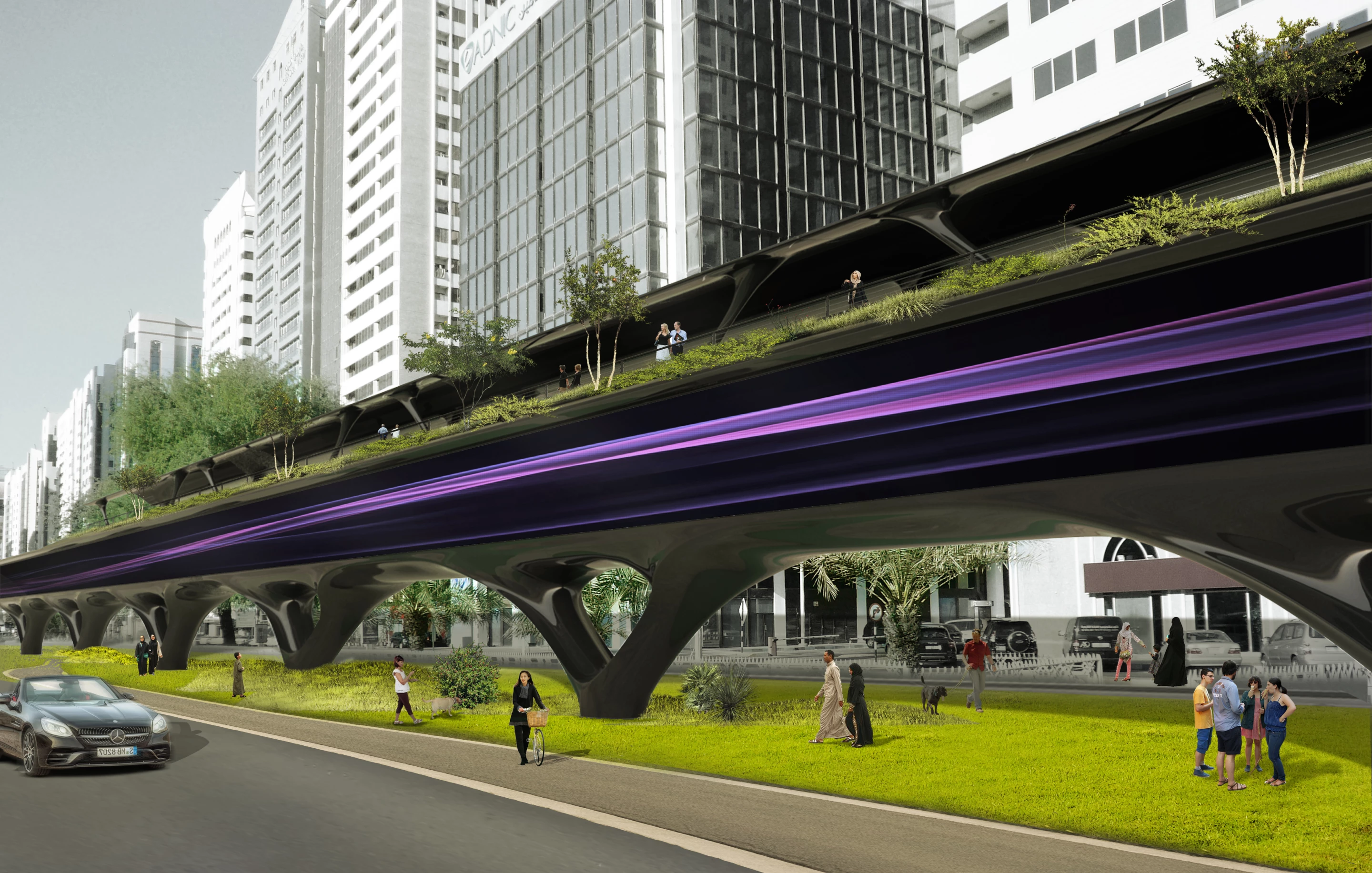We've seen a lot of technical exploration around how a hyperloop system might one day fling humans and goods across the Earth at the speed of sound inside low-vacuum tubes, but not much of the structural elements that would hold everything in place. Startup HyperloopTT has teamed up with MAD Architects to imagine what this kind of infrastructure could look like, putting forward a design that turns tube-tops into green walkways and pylons into urban farming centers.
Ever since the idea of a hyperloop first emerged in 2013, using renewables as a power source has been the name of the game. But apart from the initial Elon Musk white paper outlining the idea, which described arrays of solar cells covering the surface of tubes to power the system, much of the focus has remained on getting the propulsion systems up to speed.
And while there is some good progress being made, notably on the part of HyperloopTT competitor Virgin Hyperloop One which has had its full-scale prototype pod hit speeds of nearly 387 km/h (240 mph) in testing, there is a long way to go to reach the target of around 1,220 km/h (760 mph).

In any case, HyperloopTT is casting its eye towards the future and exploring the idea of not just fueling its system with green energy, but how it could also give a little back in the way of sustainability.
The design dreamt up together with MAD Architects calls for sets of concrete pylons to serve as the supporting structures for the steel and concrete tubes. These would be raised seven meters (23 ft) off the ground and the pylons would have a low footprint at the base to ease difficulties around land acquisition and traffic.
On ground level, the bases of these pylons would also be fitted out for urban farming purposes, with facilities integrated into the structures to raise crops. The idea is that urban farms would be entirely self-sustainable, helped in part by LEDs that line the tube above and provide a continuous source of light.

These LED strips could apparently also serve as information boards along the tubes and would be powered, in part, by bendable solar skin panels fixed to their top surface. Bladeless wind turbine farms would also be built strategically along the length of the hyperloop system to add to the energy mix, while in busier areas, sections of the solar arrays would be swapped out for green walkways for pedestrians.
While these kinds of concepts are certainly an interesting look at what a hyperloop system might look like, the technology is still some years away so they are better viewed is thought experiments rather than realistic interpretations of the future of transport.
As for how many years away exactly, well HyperloopTT has suggested it could welcome its first passengers aboard as soon as 2022. Last year it opened a dedicated test facility in France and unveiled its first full-scale passenger pod, Quintero One. It now says it is in the process of integrating the capsule for the first trials carrying people in 2020.
Source: MAD Architects










